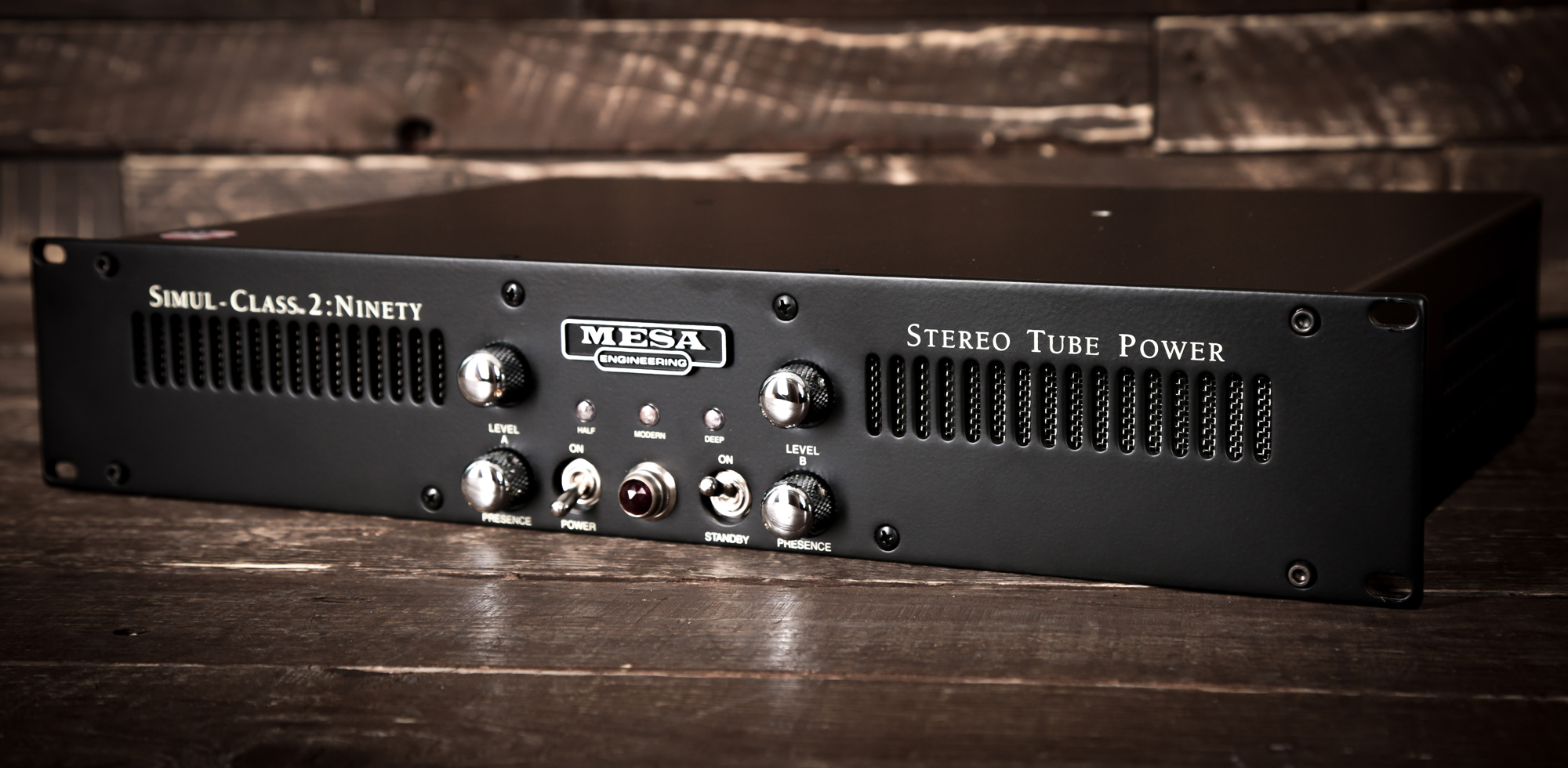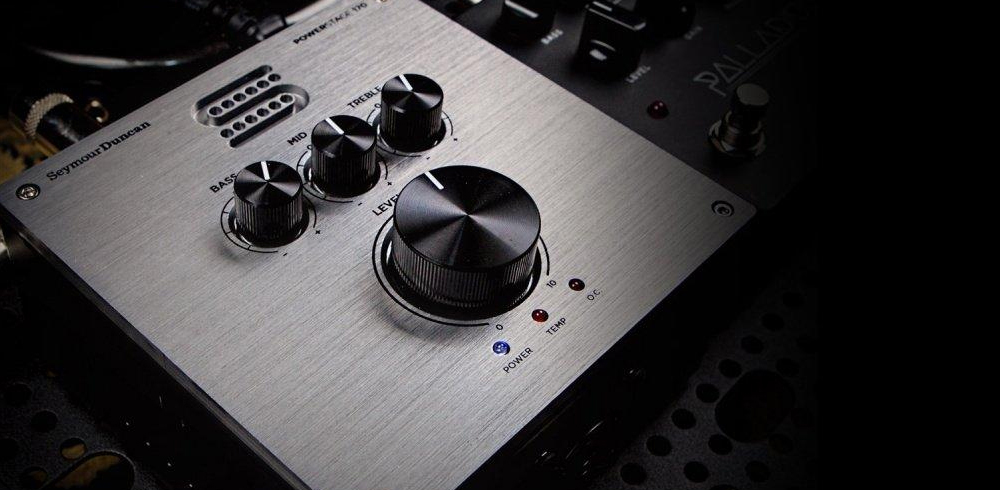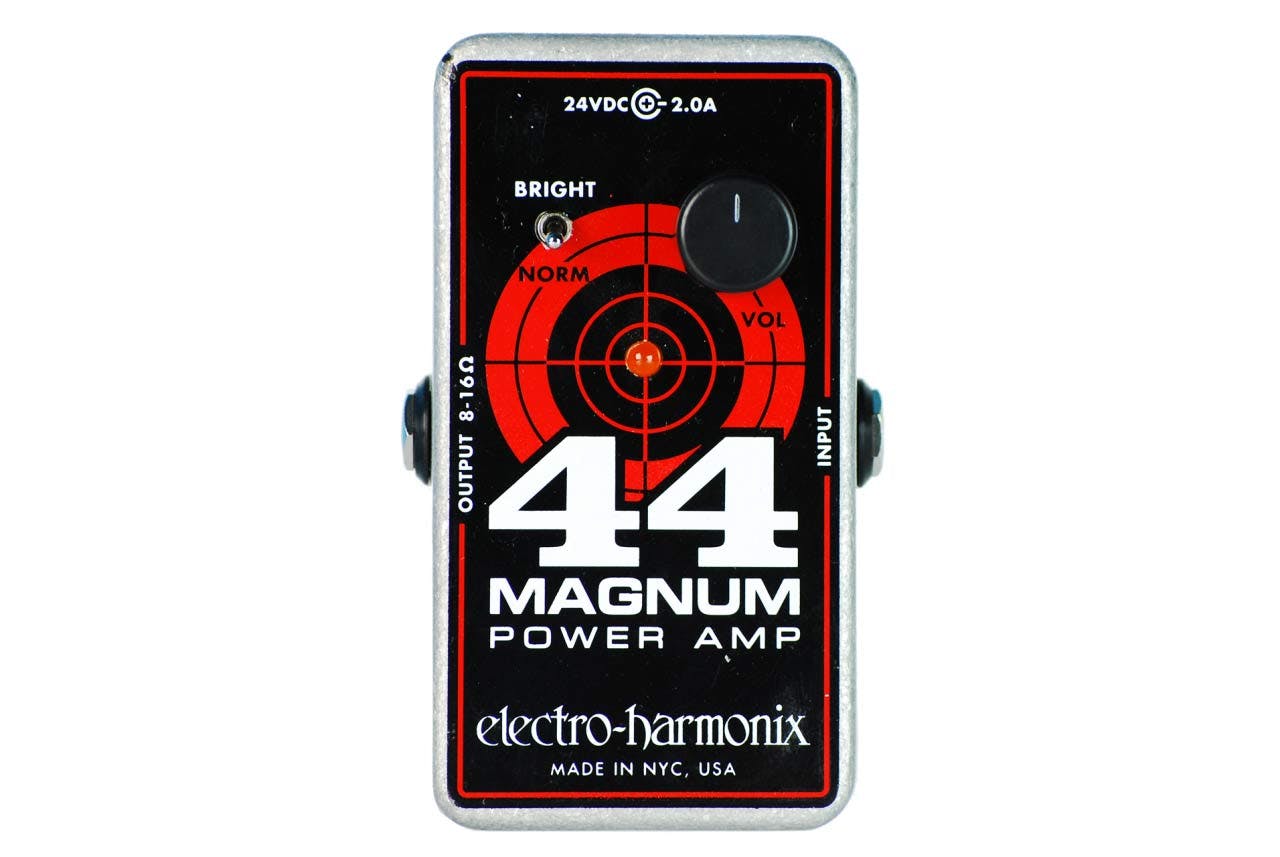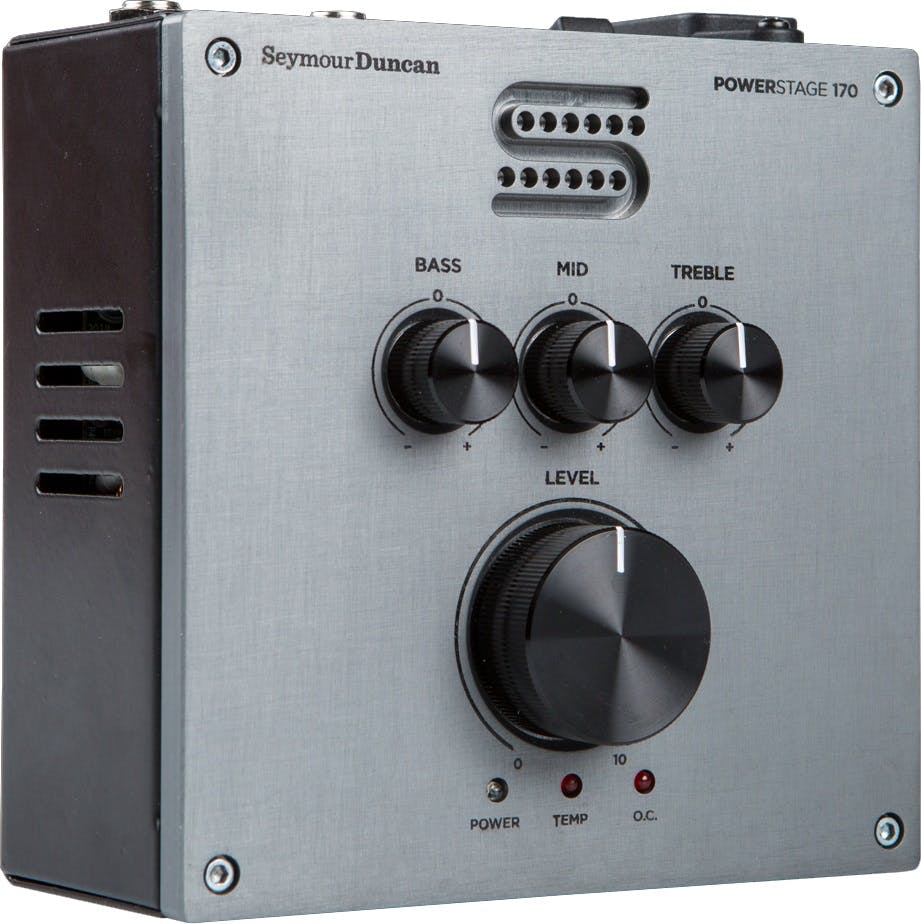Not all of us guitarists are interested in the technical stuff. In fact, many of us just like to plug in and play without being too concerned about the reasons why we “sound” a certain way. However, understanding how a piece of guitar gear works will allow you to take full advantage of what it can offer, unlocking all sorts of possibilities.
A fairly difficult piece of gear to get to grips with is a guitar amplifier. Unless you’re an electronics whizz-kid, guitar amps can be quite complicated when it comes to their construction and circuitry. We’re not going to get overly scientific in this article, as none of us are bona fide electrical engineers! But we are going to look at the two main sections that ultimately form a guitar amp: a preamp and a power amp.
“What is the difference between a preamp and power amp?” – you might ask. We’re going to tackle that question head-on, by explaining their purposes and functionality. Not only that, but we’re also going to provide a few tips on how to get the best out of them, with regards to preamp and power amp distortion.
What Is A Preamp?

A preamp is responsible for giving your guitar amplifier its core “sound”. In essence, it is the section that enables you to shape your amp’s overall voice and character. It encompasses the EQ controls that you’d usually find on your amp’s front panel, such as ‘treble’, ‘middle’ and ‘bass’.
Unless you use several guitar pedals, the first thing that your guitar’s output signal interacts with is your amplifier’s preamp section. That’s because the first stage of almost any guitar amplifier is the preamp, which comes before the power amp (hence its name). Some amps also have what is known as an ‘effects loop’, which is an input and output section that exists between these two stages. For more information on this subject, we’d recommend the following guides:
What Does A Preamp Do?
The foremost function of a preamp is to boost your electric guitar’s output signal up to ‘line level’. A pure guitar signal typically sounds weak and anaemic, something that is particularly evident when you plug a guitar directly into something like a PA system or an audio interface. A preamp is able to raise a guitar’s signal up to an audible volume. It also ensures a more dynamically consistent sound, by adding compression – essentially quietening loud volumes and boosting quiet ones, therefore smoothing out your guitar’s output across the dynamic range.
If you own a valve amplifier, it is the tubes in its preamp section that typically cause this compression. Most valve amp manufacturers fit their preamps with 12AX7 (also known as ECC83) tubes, which are somewhat of an industry standard. 12AX7s are known to react particularly well to electric guitars, causing a musical-sounding “break up” when the preamp is turned up loud. Which brings us nicely onto the next section.
What Is Preamp Distortion?
Apart from encompassing your amplifier’s EQ controls, most modern guitar amps also produce distortion from their preamp sections. The distortion that they offer, as we have covered, generally sounds quite compressed. However, this does of course depend on the type of amp that you are plugged into. Marshall’s amps, for instance, are known to sound more compressed than some of their contemporaries in the amp world. This applies to most high-gain amplifiers, which are designed to be able to provide a distorted tone even at quieter volume settings.
Distortion that is caused by a preamp also sounds saturated and fizzy in character, as 12AX7 valves are made to a high-gain specification, making them more sensitive to volume. This is also why they compress more effectively than some of the low-gain preamp tube alternatives that Fender used in the ’50s, like 12AY7 and 5751 valves.
If you’re unsure whether your guitar amp is achieving distortion from its preamp, it’s quite easy to figure it out. If you have an amp with a master volume control; keep its overall level low and turn up its gain control. If you do this, the distortion that you’re hearing is likely to be from the preamp section.
What Are Preamp Pedals?

Many modern guitar players are seeking ways to make their rigs more portable and ergonomic. For some, guitar amps can be cumbersome and unreliable, especially amplifiers fitted with tubes. The tubes that are fitted in valve amps expire after a couple of years as they heat up to high temperatures and are constructed from glass, making them brittle.
Preamp pedals solve this problem, with the majority of them built upon solid-state circuitry to ensure better reliability and longevity. Many guitar preamp pedals possess the same flexible features and controls you’d expect to find on conventional guitar amps, such as EQ knobs. Most preamp pedals also boast gain circuits in order to produce overdrive and distortion.
Sophisticated preamp pedals have even more to offer. Some feature multiple channels, akin to an amplifier, which allows you switch between different sounds. There are also models that come equipped with more comprehensive control-sets, enabling you to really dial in the perfect tones. Some of the coolest preamp pedals, though, are those fitted with valves. Although they will eventually need to be replaced, valve-powered preamp pedals are regarded for sounding more authentic than their solid-state counterparts. Victory’s V4 preamp pedals are great examples, offering all of the above and more.
Victory V4 Preamp Pedals
From a usability perspective, preamp pedals are therefore not that far removed from real amps. However, if you intend to make your rig entirely pedalboard-based, it’s important to know that you may also need power amp and cab simulator pedals to complete the setup.
Preamp Pedals
What Is A Power Amp?

A power amp is the section of a guitar amplifier that is able to actually “amplify” sound. It comes after the preamp and after an amp’s effects loop (if it has one). So when it comes to your overall signal chain, the power amp is therefore one of the last stages to affect and influence your guitar’s sound. And just like with preamps, most guitar amps have a built-in power amp stage. This is to ensure that they are all-inclusive and can thus work in conjunction with a speaker cabinet.
However, as you can see from the image above, power amps are available as separate rackmount units too. These were far more common in the ’80s and ’90s, when guitarists had racks that were filled with preamp, power amp and multi-effects modules. By having preamps and power amps as standalone units, it allowed players to mix and match their favourite gear to discover their optimal sounds.
What Does A Power Amp Do?
Whereas a preamp strengthens your guitar’s weak output signal to line level, a power amp boosts that line level signal even more – so that it can be projected through speakers. We’d understand if some of you are thinking: “why do you need two separate amp sections to strengthen your guitar’s signal once, and then again?”. Well, technically-speaking; you don’t. The reason why they’re kept apart is because of the high temperatures and noise that a power amp’s large transformers produce, which can interfere with a preamp.
The majority of valve amplifiers feature tubes in their power amp sections. But whereas preamps typically feature 12AX7 tubes universally, amp manufacturers play around with the types of valves that they fit in their power amps. As the final stage of an amplifier, the tubes that feature in a power amp section can heavily influence an amplifier’s overall “feel”.
For example, British amp companies such as Marshall and Vox are synonymous with EL34 and EL84 tubes. EL34s are known for sounding harmonically-rich, and break up more softly when pushed at high volumes. This introduces more distortion and results in less headroom, for a tighter and more compressed sound. American amp brands like Fender and Mesa/Boogie, on the other hand, usually employ 6L6 and 6V6 tubes. These valves sound much cleaner, and can be pushed hard without breaking up as easily. For more information on this topic, check out our dedicated article:
What Is Power Amp Distortion?
Speaking of turning up loud and valves breaking up, that’s exactly how power amp distortion is achieved too. Power amp distortion is considered to sound more ballsy than preamp distortion, with more mid-range punch. This type of distortion is generally more open-sounding as well, making it more reactive to your picking attack and playing dynamics.
As we explained above, the distortion a power amp produces can depend on the types of valves that are fitted in it. EL34s and EL84s break up more easily, while amps installed with 6L6s and 6V6s need to be pushed to ear-splitting volumes before they overdrive. The wattage of your guitar amp also influences this. High-wattage amps can remain clean at loud levels, whereas low-wattage amps can distort even at modest volumes.
Regarding how you can generate distortion from your amplifier’s power amp, it’s basically the opposite of the preamp method. Simply keep your amp’s preamp section clean by turning its gain/volume down, and turn up the master volume.
What Are Power Amp Pedals?

To ensure that guitarists are getting the most out of their preamp pedals, certain brands have also designed floor-based power amps. Perfect for placing at the end of your pedalboard chain, power amp pedals essentially let you connect your entire effects setup to a guitar cabinet. They effectively eliminate the need for a dedicated guitar amplifier.
While most preamp pedals are designed to be used in conjunction with power amps, a lot of players also use overdrive and distortion pedals as preamp alternatives. Power amp pedals react well to these too, and some guitarists also combine them with their multi-effects units. It’s therefore best to think of power amp pedals as blank tonal canvases. And like the majority of preamp pedals, these typically feature solid-state circuitry for reliable operation.





Responses & Questions